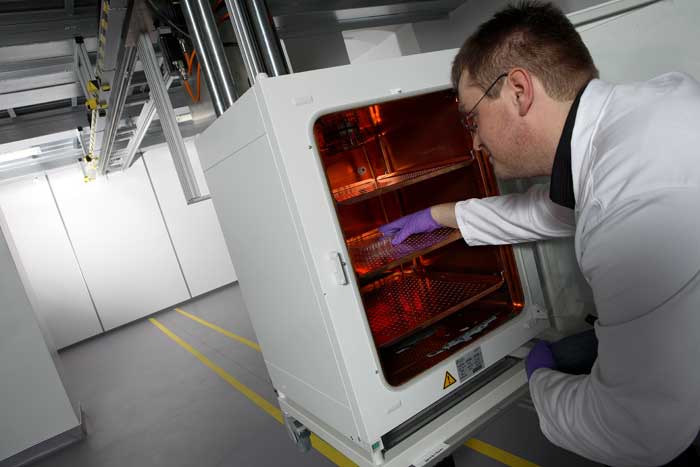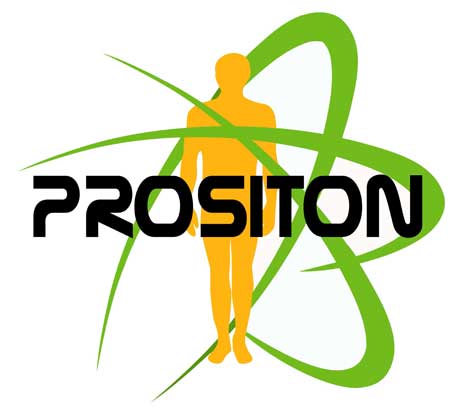Study of the effect of radiation on living organisms
Ionizing radiation causes a great variety of damage to cells. The most feared in the long term are those that affect DNA molecules (i.e. chromosomal rearrangements and mutations), which can cause serious defects. However, cells have several means to repair this damage. In order to study the biological response to ionizing radiation and possible functional disorders that may follow exposure, researchers at the DSV rely on the knowledge of mechanisms that maintain genome integrity, including signaling of DNA damage, DNA repair pathways, and mechanisms of the oxidative stress response.
DSV teams pay particular attention to the effects of
radiation on stem cells. These cells, which are not very differentiated,
are at the origin of the functional cells of an organ or tissue. For
example, hematopoietic stem cells are responsible for the blood cells
(red cells, white cells, and platelets). Changes in their genome may be
deleterious, especially since they will be transmitted to many
functional daughter cells. Researchers at the DSV thus study the
transmission mechanisms of radiation-induced damage, whether genetic or
epigenetic.

Irradiator. A
device, located in a room isolated from all external radiation by a
thick shielding, that is intended for irradiating cells with very low
doses. Knowledge of the effects of low doses is an issue in the fields
of public health and occupational medicine.
© (CEA center at Fontenay-aux-Roses)
| Individual radiosensitivityThe effects of
ionizing radiation on health vary from one individual to another.
Researchers at the DSV are trying to identify common genes or a specific
molecular signature in people who have developed a disease following
radiation therapy or accidental irradiation. For this, they use the
global approaches of genomics, proteomics and transcriptomics on selected cohorts (including the Chernobyl population
and its workers, and patients who have undergone radiotherapy). This
work will have consequences for such fields as occupational medicine,
nuclear medicine, and forensics. |
Nuclear toxicology and nanotoxicology
Nuclear toxicology consists of studying the fate and impact of radionuclides and stable chemical compounds from the nuclear industry. In particular, this includes understanding their different modes of action on living organisms (animal or plant). For example, consequences of their contamination on human health will not be the same whether they are ingested, inhaled, or if they penetrate the skin.
Researchers at the DSV rely on a fundamental understanding of tissue biology and metal metabolism, and they are dedicated to nanoparticle toxicology (nanotoxicology). In this field, they have reference tools at their disposal like carbon nanotubes (labeled with carbon-14 to facilitate their monitoring in the body), as well as models of biological barriers to characterize the interactions between nanoparticles and cellular environments.
At the CEA, the 5 operational sectors (the Divisions of Life Sciences, Physical Science, Technological Research, Nuclear Energy, and Military Applications) are involved in toxicology and work together in a cross-cutting program run by the teams of the DSV.
Bioremediation and phytoremediation
Some plants and bacteria have the ability to absorb large quantities of radionuclides or heavy metals, to the point where they can be considered for use in trapping pollutants from contaminated sites. To progress towards their use in bioremediation, researchers at the DSV draw on their experience in the study of radionuclide transport in plants, as well as their knowledge of plant adaptations to restrictive environments.
On the other hand, the study of radio-resistant bacteria and those from the microbial metagenome of former mining sites allows progress towards bioremediation. These studies are of particular interest in a post-Fukushima context, and are carried out by the DSV within the DEMETERRES project. This was the winner of the “Research in Nuclear Safety and Radiation Protection” call for projects from the “Investissements d’Avenir” program.The unit for health protection against ionizing radiation and toxic nuclear agents

If researchers obtain results in the fields of radiobiology and nuclear toxicology, it is primarily for the benefit of workers exposed to the nuclear industry, personnel that use ionizing radiation for medical applications, and populations affected by such a risk. Prositon, a unit with expertise in toxicology, is situated at the interface between laboratories and radiation protection professionals (i.e. work doctors and radiation protection engineers), players in public health, and even international organizations with expertise in radiation protection. Its objectives are to facilitate the transition from research to application (even regarding regulations), to identify areas in which research is necessary, and to raise awareness among laboratories.
Learn more about Prositon